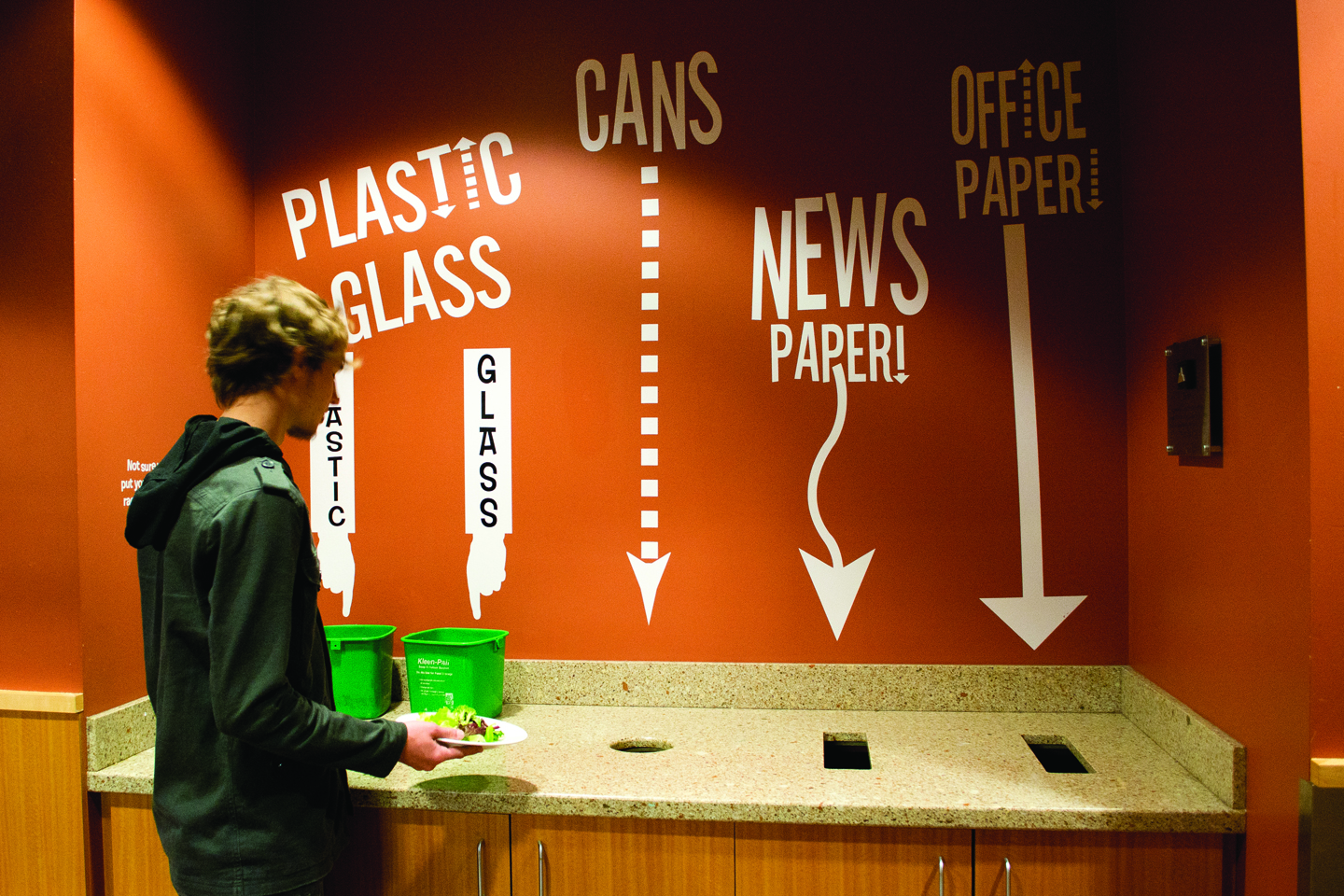
By Maddie Bernard, Columnist
If you ate dinner in the University Commons April 7-8 of last week, you may have noticed something strange — someone asked for your leftover food. Senior Jenny Taylor, an environmental and Hispanic studies major, and some of her Pacific Lutheran University classmates conducted a study of food waste during dinnertime in the Anderson University Center.
From 5:30-7:30 p.m., they asked students to dump their leftover food into large buckets, which they later weighed. The results were shocking. They found that the food students threw out from April 7 weighed about 163 pounds. For April 8, diners wasted 101 pounds of food. That’s an average of about 66 pounds of food wasted per hour.
“It’s a lot of food. It’s a lot of wasted resources,” Taylor said. “If students were more conscious of how much they put on their plates, less of that food would be going to the compost.”
Food waste appears to be a huge issue, especially in the United States. Throwing away leftovers not only wastes food, it also wastes money, water and other resources. By wasting perfectly good food, we are clogging up the landfills, wasting the water used to grow the food and wasting the gas and fuels used to ship the food to our location.
Food waste starts a chain reaction and causes more unnecessary waste in the process. By reducing our food waste, we can not only save money, but also other resources. While food waste is a large, global problem, it can be solved through our simple, everyday choices.
PLU has been working to reduce its food waste over the last few years. In the past, Taylor and her friends did a study of food waste in the AUC to determine if the use of trays caused more food waste during dinnertime. They found students wasted about 250-300 pounds of food at dinner when trays were present. Trays often cause us to take more food than we can eat, which results in higher food waste.
There is a positive correlation between the amount of wasted food and tray use. The results of their study caused the AUC to eliminate trays from dinnertime, and it is why the AUC still remains trayless to this day. The April 7-8 study was a follow-up to see how much food waste accumulated in the AUC after trays had been removed from dinner. As the results show, the trayless policy reduced the amount of food waste by about 50 percent.
“We are just trying to remind you why we don’t have trays,” Taylor said. “It actually does have a pretty big impact.”
At PLU, we can each reduce our personal contribution to food waste by not using trays. Know how much you can eat, and don’t let your eyes trick your stomach into thinking it’s hungrier than it is.
“Ask for smaller portions,” Taylor said. “Try to be conscious. All this good food is being thrown away. It’s kind of heartbreaking.”
While food waste seems like an insurmountable issue, if we each do our part, we can significantly reduce the food we waste.
























